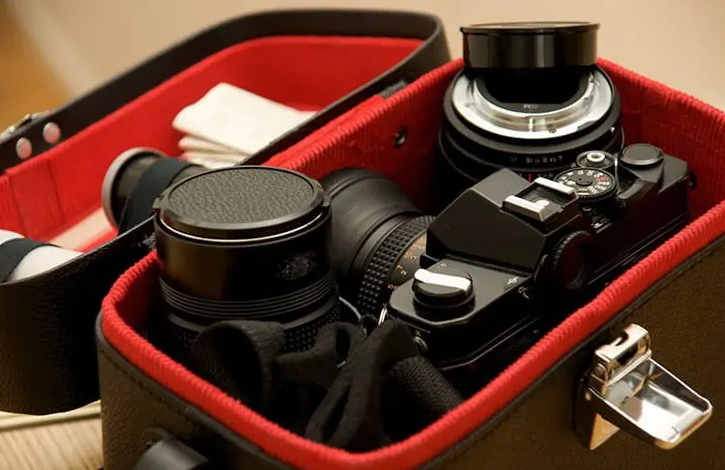The answer depends on your specific needs. Hard shell cases offer superior protection and durability but come with higher costs and weight.
Table of Contents
The Anatomy of Hard Shell Cases
Understanding the anatomy of hard shell cases can provide valuable insights into their effectiveness for protecting valuable items. From the materials used in their construction to the designs that optimize for durability and protection, here’s a deep dive into what makes these cases unique.

Materials Used
One of the defining aspects of hard shell cases is the material used in their construction. Predominantly, manufacturers opt for high-impact resistant plastics like polycarbonate and ABS (Acrylonitrile Butadiene Styrene). These materials not only contribute to the case’s overall toughness but also make it more lightweight compared to metal cases. Some luxury hard cases might incorporate materials like aluminum or even carbon fiber, known for its high strength-to-weight ratio.
- Polycarbonate: Offers excellent impact resistance and is often transparent.
- ABS: Known for its hardness, toughness, and resistance to chemicals.
- Aluminum: Offers a premium feel but generally weighs more.
- Carbon Fiber: Extremely light and strong but often expensive.
For those interested in a deeper understanding, the Wikipedia page on Polymers offers an extensive overview.
Construction and Design
When it comes to the construction and design of hard shell cases, the emphasis is often on maximizing protection while minimizing bulk. Manufacturers employ a variety of techniques to achieve this balance.
- Rigid Outer Shell: A solid, unyielding outer layer that can withstand significant force.
- Foam Inserts: These can be custom cut to fit the specific items you’re carrying, providing an additional layer of protection against shock and vibration.
- Weather Seals: Many hard shell cases feature a watertight seal to protect against the elements.
- Lock Mechanisms: Depending on the use-case, some hard shell cases come with advanced locking systems, including padlocks and even biometric locks for added security.
The interior of the case often features compartments or padded sections that provide cushioning and keep items securely in place. Many cases also come with handles and wheels for ease of transportation.
Advantages of Hard Shell Cases
Hard shell cases offer a plethora of advantages, making them the preferred choice for various applications ranging from traveling to professional equipment storage. Whether you’re looking to protect your precious camera gear or ensure your musical instruments arrive unscathed, hard shell cases provide a level of protection that’s hard to match. Below, we dive into some of their key advantages.
High-Level Protection
The primary advantage of hard shell cases is, undoubtedly, the high level of protection they offer. Made with materials like polycarbonate and ABS, these cases are virtually impervious to impact. Even under extreme conditions, such as being dropped or being subjected to substantial pressure, they shield the contents inside effectively.
- Impact Resistance: The material and design work in tandem to absorb and distribute the force of an impact.
- Shock Absorption: The foam inserts or padded compartments minimize vibrations and shocks that can damage sensitive equipment.
For those interested, the Wikipedia page on Impact Resistance offers a more scientific look at the property.
Durability
Longevity is another critical benefit of hard shell cases. Unlike soft cases, which may tear or wear out over time, hard shell cases are built to last. They resist scratching, denting, and other forms of wear and tear, making them a long-term investment.
- Scratch-Resistant: The exterior surface is typically designed to resist scuffs and scratches.
- Wear and Tear: Hard shell cases are less susceptible to everyday wear, making them more cost-effective in the long run.
For a deeper understanding of material durability, you can consult the Wikipedia page on Wear.
Water and Dust Resistance
A vital feature for adventurers and professionals alike, the water and dust resistance of hard shell cases can be a lifesaver. Whether you’re trekking through a rainforest or filming in a desert, these cases keep your equipment safe and sound.
- Sealed Construction: Many hard shell cases come with rubber gaskets that provide an airtight and watertight seal.
- IP Rating: Cases often have an Ingress Protection (IP) rating to specify their level of dust and water resistance.
Further details on IP ratings and what they signify can be found on Wikipedia’s IP Code page.
Drawbacks of Hard Shell Cases
While hard shell cases offer an array of benefits, they are not without their downsides. It’s essential to weigh these drawbacks against the advantages to determine if a hard shell case is the right choice for your specific needs. Here are some of the most commonly cited disadvantages.
Weight and Bulkiness
One of the most immediate drawbacks of hard shell cases is their weight. Materials like polycarbonate and ABS, although lighter than metals, still add a significant amount of weight compared to soft cases or bags. The weight becomes even more of an issue if you’re traveling and need to adhere to luggage weight restrictions.
- Extra Luggage Fees: The added weight may result in extra airline baggage fees.
- Storage Space: Their rigid structure takes up more storage space, making them less convenient for tight spaces.
To know more about the challenges of managing weight during travel, you can refer to the Wikipedia page on airline baggage.
Cost Factor
Quality comes at a price, and hard shell cases are generally more expensive than their soft case counterparts. This cost can be prohibitive for some users, particularly those who require multiple cases for various pieces of equipment.
- Initial Investment: The cost of a quality hard shell case can be significantly higher than that of a soft case.
- Potential for Additional Costs: Add-ons like custom foam inserts or advanced lock systems can further escalate the cost.
For a more general understanding of cost-benefit analysis, the Wikipedia page on the subject offers some insights.
Limited Customization
Unlike soft bags or backpacks that can stretch and adapt to fit a variety of items, the rigid structure of hard shell cases offers limited customization options.
- Fixed Dimensions: The hard shell imposes restrictions on the size and shape of items you can carry.
- Lack of Pockets and Compartments: While some hard cases come with customizable foam inserts, they generally offer fewer pockets and compartments for organizing smaller items.
For those who are interested, the Wikipedia page on customizing products may offer additional insights into the topic.

Comparing Hard Shell Cases to Other Types
Choosing the right type of case for your needs involves comparing different options available in the market. Hard shell cases offer excellent protection and durability, but there are alternatives like soft cases, padded bags, and hybrid cases, each with its own set of pros and cons. Below is an in-depth comparison.
Soft Cases
Soft cases, usually made from fabrics like nylon or polyester, offer the advantage of being lightweight and more easily customizable. However, they provide less protection compared to hard shell cases.
- Protection: Lower level of protection against impacts and weather elements.
- Weight: Generally lighter, ranging from 1-3 lbs.
- Cost: More budget-friendly, ranging from $20-$100.
Size and Specification Comparison for Soft Cases
| Dimension | Small | Medium | Large |
|---|---|---|---|
| Height | 10-12″ | 13-15″ | 16-18″ |
| Width | 6-8″ | 9-11″ | 12-14″ |
| Depth | 3-5″ | 6-8″ | 9-11″ |
For those interested, the Wikipedia page on backpacks provides a comprehensive look at soft carrying options.
Padded Bags
Padded bags provide a middle-ground between soft cases and hard shell cases. They include extra padding to protect against minor impacts but are generally not suitable for harsh conditions.
- Protection: Moderate level of protection; good for everyday use.
- Weight: Slightly heavier than soft cases, averaging 3-6 lbs.
- Cost: Mid-range, from $50-$200.
Size and Specification Comparison for Padded Bags
| Dimension | Small | Medium | Large |
|---|---|---|---|
| Height | 12-14″ | 15-17″ | 18-20″ |
| Width | 8-10″ | 11-13″ | 14-16″ |
| Depth | 5-7″ | 8-10″ | 11-13″ |
Hybrid Cases
Hybrid cases aim to combine the best of both worlds—soft materials for the body and hard shells to protect the most vulnerable parts. These are useful for people who need a versatile, adaptable solution.
- Protection: Good overall protection, though not as robust as hard shell cases.
- Weight: On the heavier side, around 5-10 lbs.
- Cost: Can be expensive, ranging from $100-$400.
Size and Specification Comparison for Hybrid Cases
| Dimension | Small | Medium | Large |
|---|---|---|---|
| Height | 14-16″ | 17-19″ | 20-22″ |
| Width | 10-12″ | 13-15″ | 16-18″ |
| Depth | 7-9″ | 10-12″ | 13-15″ |
For more details on various kinds of cases and luggage, the Wikipedia page on travel gear is a valuable resource.






